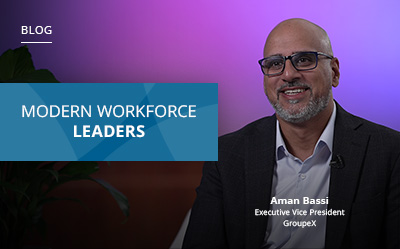This interview is an excerpt from our The State of the Manufacturing Workforce in 2024 and Beyond report and is part of our Modern Workforce Leader Series—Manufacturing Edition. The series spotlights interviews with manufacturing industry experts including this conversation with Dimitri Ruiz, Functional Expert Payroll at Mars Global, about how new technologies can be a double-edged sword in workforce engagement, the right way to communicate change to employees to simplify processes, and the importance of data analytics capabilities to enable businesses to improve workforce management.
WHAT INDUSTRY CHANGES HAVE CHANGED HOW YOU ENGAGE WITH EMPLOYEES?
Many new technologies have been introduced to empower people to independently perform their activities well, from associates to managers. The key elements are how the technology enables employees to have these self-service processes, so they don’t have to depend on others.
The major challenge presented by these new technological solutions is usability. How user-friendly or intuitive are these applications? How can we provide enough information on the screens so that people can understand what they need to do?
It’s a big challenge currently because we are not there yet in terms of user-friendliness. It’s not a generational problem per se, but more about the technological challenge—while older people may find it more challenging if the technology is easy to access and manipulate, then it will be beneficial for the industry overall.
WHAT NEW TECHNOLOGIES ARE YOU USING TO ADDRESS CHANGING WORKFORCE DEMANDS?
New desktop and mobile applications have been introduced to help workers gain more visibility and control over their work schedules, like submitting requests for time off through these platforms. This has made it easier for workers to manage their own time and shifts.
As a part of the payroll team, we have also conducted tests and pilots to better understand how we can deploy new features and applications to the workforce to streamline processes. Our mobile application was unsurprisingly well received by the younger generation, but it’s also been well received by most people in general thanks to the flexibility it provides. Workers don’t have to be tied to a single location or desktop to perform tasks or submit requests.
WHAT STRATEGIES THAT HAVE WORKED FOR MANUFACTURING SHOULD OTHER SECTORS CONSIDER?
The manufacturing workforce population is very dynamic. With such a huge and diverse population, the challenge is, how can we manage this dynamic and diverse workforce more easily and adapt to their needs more quickly?
With global issues like the pandemic and geopolitical conflict, we are facing growing challenges and need faster adaptation. While it is not so simple to change things in systems or applications in such large industries and organizations, our focus on technology has enabled us to make progress. The key is identifying how technology can help with adaptation and implementing it successfully. That’s the biggest challenge.
WHERE DO YOU SEE YOUR FUTURE TECHNOLOGY SPEND IN THE NEXT FEW YEARS?
We are looking at easier ways to extract and analyze data. Not all businesses have reached the same level of technological maturity, and I see a lot of managers struggle to extract existing data from systems. This is an issue as our managers need the ability to analyze this data easily and effectively so we can look into improving our operational processes more efficiently.
The question is, how can we provide new solutions, platforms, and dashboards for the organizations so that managers have improved data analysis and management capabilities? We also need to identify new opportunities for automation through new technologies and need to revisit our processes. Although we have some of the technology currently, we need to find new ways to optimize and transform our manual processes for greater efficiency.
WHAT ADVICE DO YOU HAVE FOR OTHER LEADERS ON WORKFORCE MANAGEMENT?
Balancing technology and users can be tricky, especially if you have a very complex ecosystem of applications and tools. With everything driven by technology, it’s important to maintain a goal of developing better communication and engagement by streamlining these technologies.
When there is only one front-end platform and one screen for users to access information and perform tasks, it becomes easier for workers to stay informed and engaged. What has worked for us is having an ecosystem that’s less complex, so our workers can remain connected and focused through fewer applications. Platforms like [SAP] SuccessFactors have helped us maintain this simplicity through easy payroll integrations and applications.
Discover more valuable perspectives from industry pioneers and uncover essential workforce technology trends in our comprehensive report, “The State of the Manufacturing Workforce in 2024 and Beyond!”




